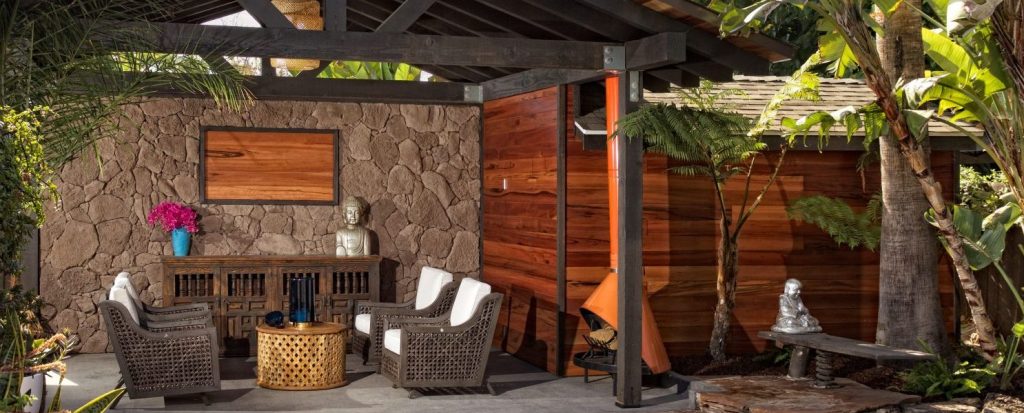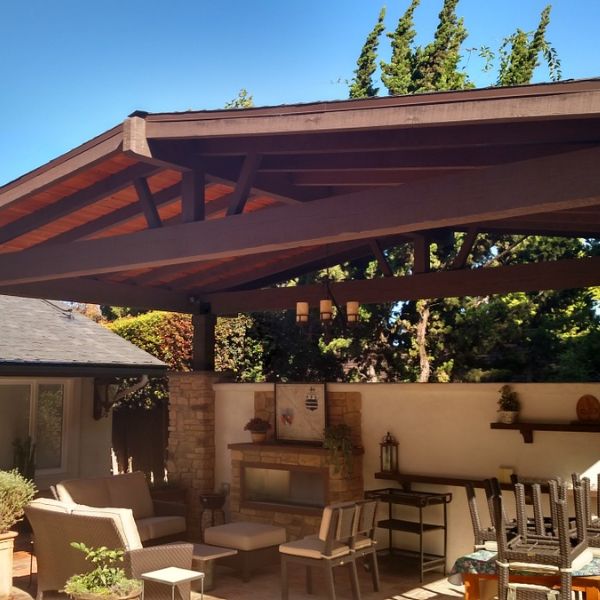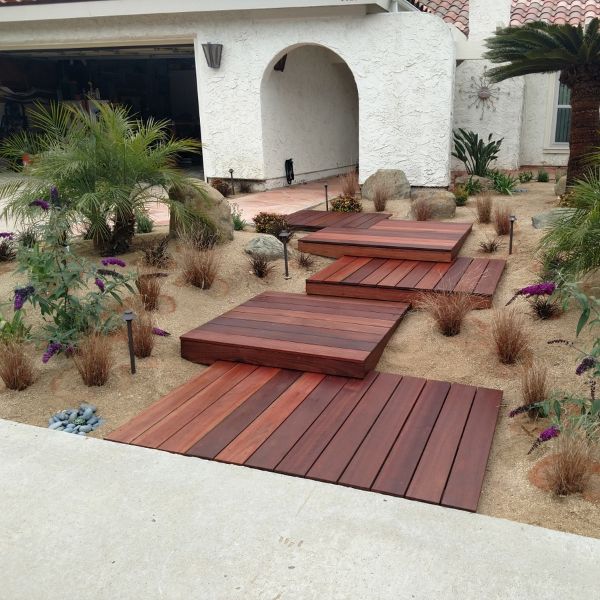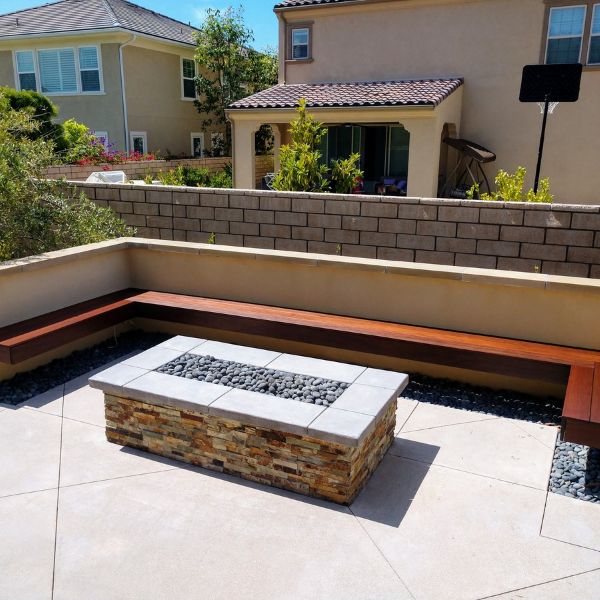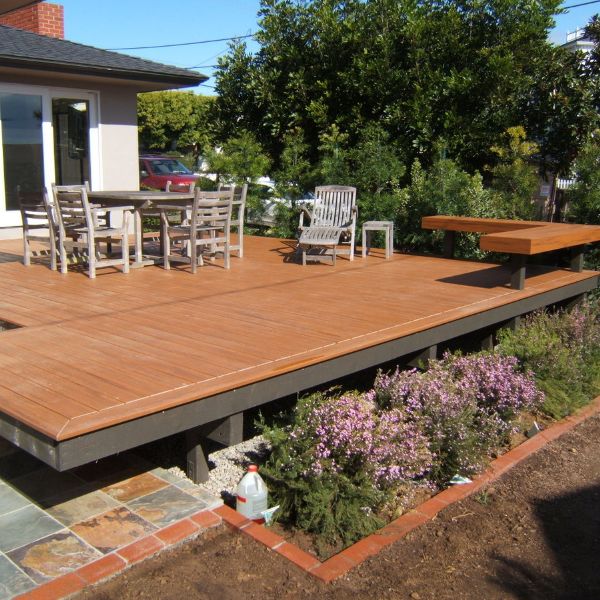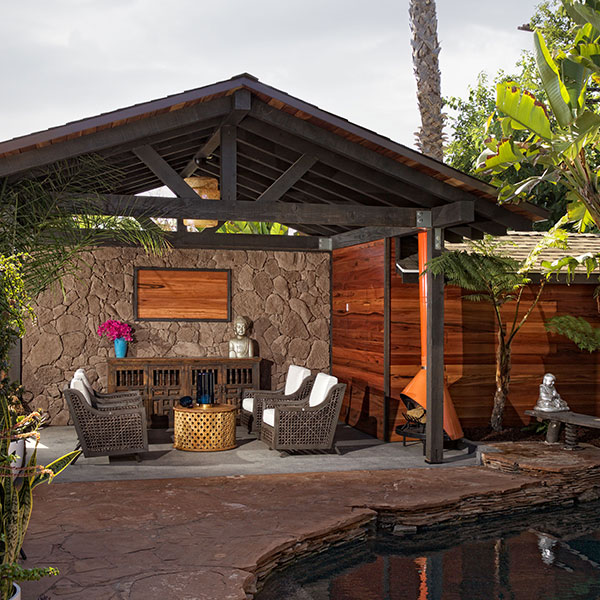Tips and Techniques for Proper Water Management
Negotiating the challenges of a sloped backyard when installing a paver patio is no easy feat. The success lies in your ability to keep excess water at bay — allowing you to enjoy a stunning outdoor living space, breakdown-free.
With revolutionary tips and techniques for proper water management from Wilson Woodscape, you can transform your yard into a delightful haven that endures torrential rains and menacing snowmelt. Our San Diego landscape contractor, Jeff Wilson, will guide you through innovative drainage ideas for your paver patio project — turning seemingly impossible slopes into a striking feature of your outdoor paradise.
Challenges of Paver Patios on Sloped Backyards
Designing and installing a paver patio on a sloped backyard presents some unique challenges compared to a flat surface. Some of the main difficulties you may encounter include:
- Ensuring proper drainage of water off the patio surface. Slopes cause water to flow downhill and accumulate if drainage is inadequate.
- Preventing pooling, erosion, and soil movement under the pavers due to excessive water runoff. Heavy rains can exacerbate these issues, resulting in standing water or soil erosion on your pavers.
- Adjusting the patio structure and base layers to account for shifting or settling on the sloped terrain. This maintains structural integrity.
- Establishing measures to prevent erosion around patio edges and low areas. Erosion undermines the patio over time.
- Dealing with increased debris accumulation from leaves, dirt, etc. can hinder drainage and stain the pavers.
- Conducting regular maintenance and cleaning to keep drainage unobstructed and prevent buildup. Upkeep is crucial.
- Retaining the base gravel layers properly to avoid washout on steeper slopes.
- Managing drainage and runoff from surrounding landscape features like planters or yards.
- Allowing proper slope and drainage when integrating patios with other features like steps, retaining walls, pergolas, etc.
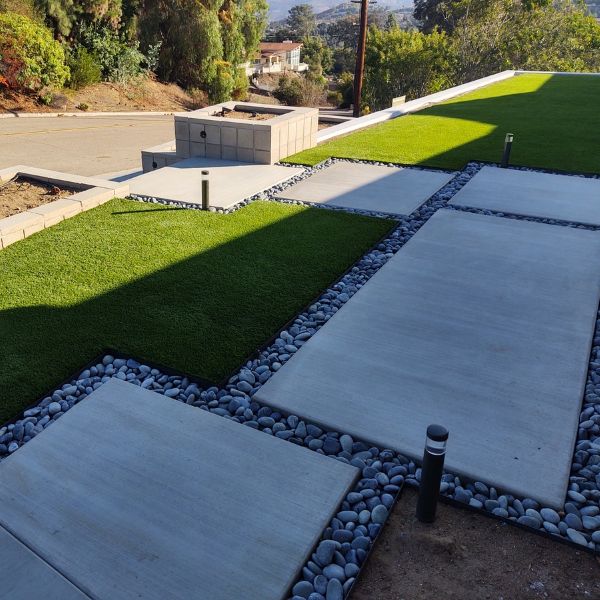
Water Management in Sloped Backyards
Proper water management is essential when working with sloped backyards and paver patios. The key is to control the flow of water and ensure it drains away from the patio efficiently.
Terraced Landscaping and Drainage Techniques
When addressing the challenges of proper water management on paver patios in sloped backyards, terraced landscaping emerges as a highly recommended technique. Terraced landscaping involves carving out different platforms or steps on the slope, aiding in managing water flow but also providing functional areas for seating, plantings, or outdoor activities. This technique helps prevent erosion and allows excess water to be redirected away from the patio area.
To implement terraced landscaping and optimize drainage in your backyard, you may start by:
- Evaluating the slope’s steepness and determining the appropriate number of terraces needed. The specific design will depend on various factors, such as the size of the yard, available materials, and personal preferences.
- Consider implementing suitable drainage techniques. One effective method is gravel-filled trenches or French drains along each terrace level. These drains assist in capturing and redirecting excess water away from the paver patio, preventing pooling and potential damage.
- In addition to trenches or French drains, incorporating perforated pipes into the terrace design can further enhance water management. These pipes effectively collect water and direct it towards designated drainage areas like rain gardens or dry wells.
Implementing Retaining Walls for Proper Drainage
Retaining walls act as barriers that can redirect water flow away from the patio area to protect it from erosion and damage. They also provide important structural support and reinforcement on sloped terrains where a patio is installed. Implementing properly designed retaining walls is an effective strategy for facilitating drainage on sloped properties.
- Our San Diego landscape contractor can use various aesthetically pleasing materials for retaining walls, such as concrete blocks, natural stone, or timber depending on budget.
- Incorporate key drainage techniques into retaining wall design, such as weep holes or perforated drainage pipes that allow water to escape.
- Using gravel backfill behind retaining walls improves subsurface drainage and minimizes moisture buildup.
- It’s crucial to maintain proper grading of the slope to encourage water to drain away from the patio vicinity.
- When installing retaining walls, factors like height, stability, and backfill needs must be taken into account.
- Consulting construction professionals, like Jeff Wilson, is recommended to ensure retaining walls are built to the proper specifications.
- Local building codes should be reviewed to guarantee retaining walls comply with any requirements.
Material Selection for Patio Drainage
When designing and constructing a paver patio in a sloped backyard, selecting the right materials is crucial for effective water management and drainage. Choosing the appropriate materials can make a significant difference in how well your patio withstands heavy rainfall and prevents water buildup.
- Permeable pavers (concrete, natural stone)
- Gravel or crushed rock for the base layer
- Bedding materials (concrete sand, chip stone)
- Polymeric jointing sand
- Drainage components (gravel, pipes, trenches)
- Erosion control materials (geotextiles, silt fencing)
- Retaining wall materials (concrete, stone, timber)
- Landscaping materials (plants, mulch, gravel)
- Rain barrels or cisterns
- Sealing products (paver sealants, joint stabilizers)
- Edge restraints (edging, borders)
- Base reinforcement (geogrids, grids)
- Subsurface drainage (French drains, catch basins)
Contact Wilson Woodscape today to discuss selecting suitable materials for your patio drainage needs.
Role of Bedding Material in Drainage
The choice of bedding material beneath the pavers plays a significant role in ensuring proper water drainage on your paver patio.
- Concrete sand is commonly used as bedding material beneath patio pavers due to its granular composition that allows excess moisture to flow freely through the joints, promoting efficient drainage.
- Incorporating polymeric sand in the joints between pavers can further enhance drainage capabilities. Polymeric sand hardens when exposed to moisture to form a permeable surface that allows some water absorption while enabling heavy rain to sheet off the surface, preventing pooling.
- As an alternative to concrete sand, 1/4 chip stone can be used as bedding material for pavers to minimize erosion in cases of heavy rainfall or intense downpours.
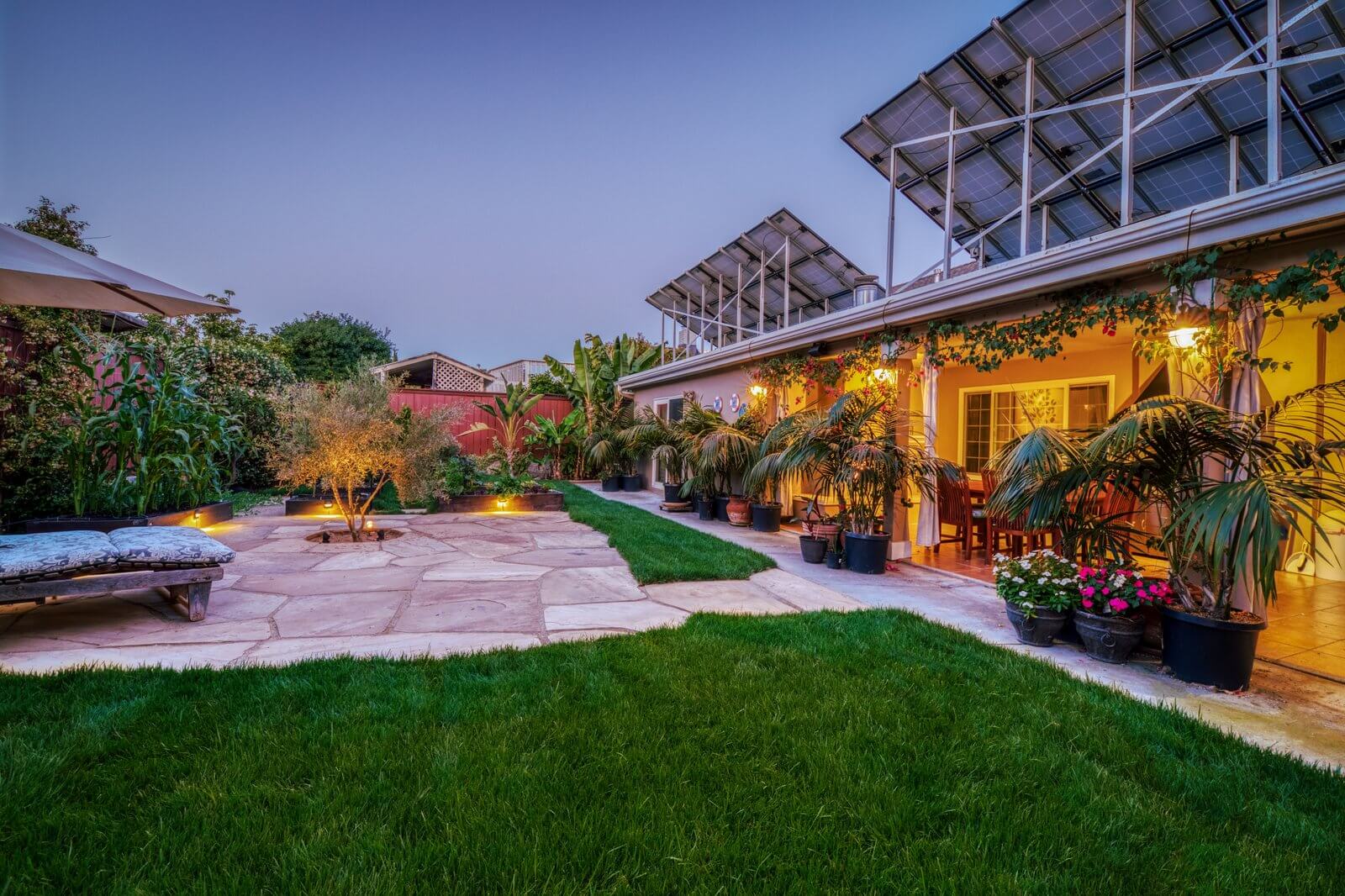
Maintenance Tips for Sloped Patios
Maintaining a paver patio on a sloped backyard requires extra attention and care to ensure proper water management. Here are some essential maintenance tips to keep your patio in optimal condition:
- Regularly check for any signs of water pooling or standing on the patio surface, as this indicates improper drainage. If certain areas tend to accumulate water, adjustments may need to be made to the patio’s slope or additional drainage outlets added.
- Inspecting the joints between patio pavers periodically and addressing any gaps or cracks that have formed is recommended. These openings can worsen over time due to water erosion and lead to an unstable surface. Filling them with polymeric sand or suitable filler material will maintain stability and prevent further damage.
- Weed growth often occurs between paver joints as moisture accumulates, so it is essential to remove any vegetation or weeds sprouting up to preserve the integrity of the patio surface. This maintenance also enhances the aesthetic appeal.
- Applying a protective sealant to the patio pavers can help repel water, minimize fading and wear, and reduce erosion. Be sure to follow the manufacturer’s guidelines for proper application and reapplication of the sealant.
- Paying attention to any shifting or settlement of the pavers is advised, as individual units that have sunk or moved significantly may need to be reset to improve appearance and maintain proper drainage.
- Regular cleaning is critical for sloped patios to eliminate debris such as leaves, dirt, or other matter that can hinder water flow and create slip hazards.
Let Us Help With Your Sloped Patio Drainage
Installing a beautiful and functional paver patio on a sloped backyard presents some unique drainage challenges. But with careful planning, proper materials, and effective water management techniques, you can create a stunning outdoor space optimized for proper drainage. Contact Wilson Woodscape today at (619) 838-1398 for a consultation.

